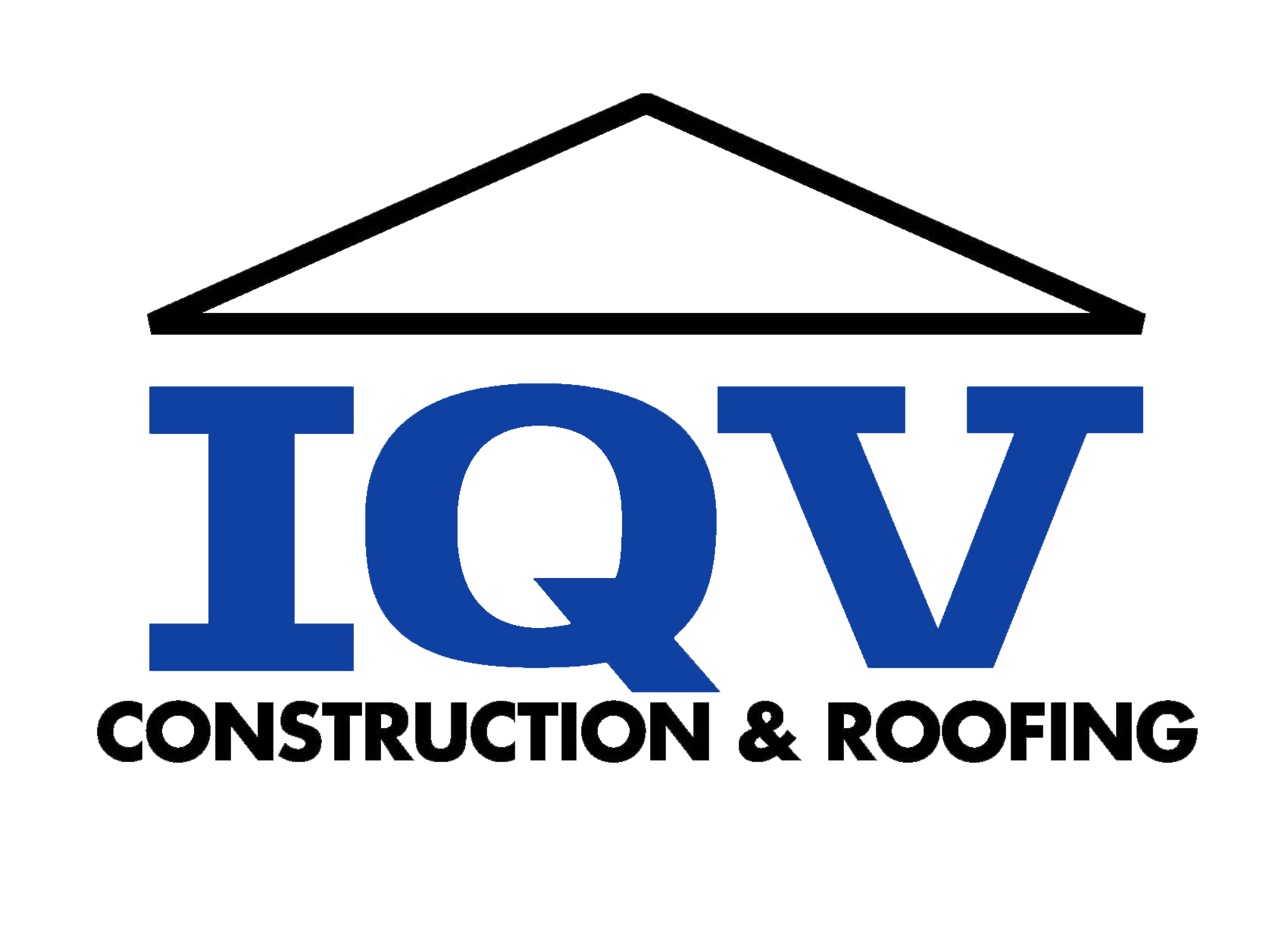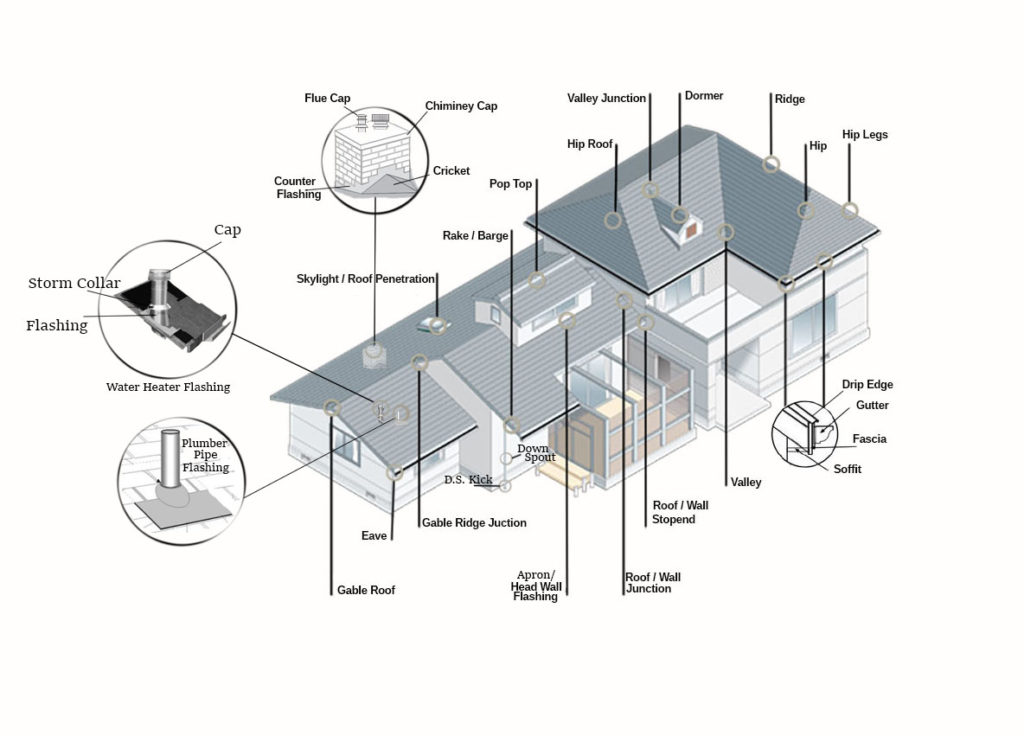Roofing Terminology
Before you can accurately understand a roof assessment or a roofing estimate, you should be familiar with roofing terminology. Below are some commonly used terms that identify parts of a roof and types of roofing.
A
Algae:
Rooftop fungus that can leave dark stains on roofing.
Angled Fasteners:
Roofing nails driven into decks at angles not parallel to the deck.
Apron Flashing:
Metal flashing used at chimney fronts.
Asphalt:
A bituminous waterproofing agent used in various types of roofing materials.
Asphalt Plastic Cement (Tar):
Asphalt based sealant material, meeting ASTM D4586 Type I or II. Used to seal and adhere roofing materials. Also called mastic, blackjack, roof tar, bull.
B
Blistering:
Bubbles or pimples in roofing materials. Usually moisture related. In shingles blisters are caused by either moisture under the material or moisture trapped inside the material.
Blow-Offs:
When shingles are subjected to high winds and are forced off a roof deck.
Buckling/Curling:
When a wrinkle or ripple affect shingles or their underlayment’s perception.
C
Counter Flashing:
The metal or siding material that is installed over roof-top base flashing systems.
Crickets:
A peaked water diverter installed behind chimneys and other large roof projections. Effectively diverts water around projections.
Cupping:
When shingles are improperly installed over an existing roof or are over-exposed, they may form a curl or cup. May also be due to a manufacturing defect.
D
Dormer:
A raised roof extending out of a larger roof plane.
Drip Edge:
An installed lip that keeps shingles up off the deck at edges and extends shingles out over eaves and gutters.
Down Spout:
A pipe for carrying rainwater from a rain gutter.
E
Eaves:
The roof edge from the fascia to the structure’s outside wall. In general terms, the first three feet across a roof is termed the eave.
End Laps:
When installing rolled products in roofing, the area where a roll ends on a roof, and is overlapped by the next section of rolled material.
Exposure:
The area on any roofing material that is left exposed to the elements.
F
Fasteners:
Nails or Screws used to secure roofing to the decks.
Fiberglass Mat:
Fibers condensed into strong, resilient mats for use in roofing materials.
Flange:
Metal pan extending up or down a roof slope around flashing pieces. Usually at chimneys and plumbing vents.
Flashing:
Materials used to waterproof a roof around any projections.
G
Gable Roof:
Traditional roof style; two peaked roof planes meeting at a ridge line of equal size.
Granules:
Crushed rock that is coated with a ceramic coating and fired, used as top surface on shingles.
H
Hand-Sealing:
The method to assure sealing of shingles on very steep slopes, in high wind areas, and when installing in cold weather.
Head Wall:
Continuous metal flashing consisting of several feet of metal. Used at horizontal walls, bent to resemble an “L”.
High Nailing:
When shingles are nailed or fastened above the manufacturer’s specified nail location.
Hip Legs:
The down-slope ridges on hip roofs.
Hip Roof:
A roof with four roof planes coming together at a peak and four separate hip legs.
L
Laminated Shingles:
Shingles made from two separate pieces that are laminated together. Also called dimensional shingles and architectural shingles.
Low Slopes:
Roof pitches less than 4:12 are considered low sloped roofs. Special installation practices must be used on roofs sloped 2:12-4:12. Shingles cannot be installed at slopes less than 2/12.
M
Mansard Roof:
A roof design with a nearly vertical roof plane that ties into a roof plane of less slope at its peak.
Mats:
The general term for the base material of shingles and certain rolled products.
Mortar:
Mixture of sand, mortar, limestone and water used in bonding a chimney’s bricks together.
N
Nail Guide Line:
Painted line on laminated shingles, to aid in the proper placement of fasteners.
Nail-Pop:
When a nail is not fully driven, it sits up off the roof deck.
O
Open Valley:
Valley installation using metal down the valley center.
OSB:
Oriented Strand Board. A decking made from wood chips and lamination glues.
Overdriven:
The term used for fasteners driven through roofing material with too much force, breaking the material.
Overexposed:
Installing shingle courses higher than their intended exposure.
P
Parapet Wall:
A barrier which is an extension of the wall at the edge of a roof.
R
Rake Edge:
The vertical edge of gable style roof planes.
Rigid Vent:
Hard plastic ridge vent material.
Roof Louvers:
Rooftop rectangular shaped roof vents. Also called box vents, mushroom vents, airhawks, soldier vents.
S
Self-Sealant:
Sealant installed on shingles. After installation, heat and sun will activate sealant to seal the shingles to each other.
Shed Roof:
Roof design of a single roof plane. Area does not tie into any other roofs.
Side Walls:
Where a vertical roof plane meets a vertical wall. The sides of dormers etc.
Soffit Ventilation:
Intake ventilation installed under the eaves, or at the roof edge.
Starter Strip:
The first course of roofing installed. Usually trimmed from main roof material.
Step flashing:
Metal flashing pieces installed at sidewalls and chimneys for weatherproofing.
T
Tear-Off:
Removal of existing roofing materials down to the roof deck.
Telegraphing:
When shingles reflect the uneven surface beneath them.
Ex: Shingles installed over buckled shingles may show some buckles.
Transitions:
When a roof plane ties into another roof plane that has a different pitch or slope.
U
Underdriven:
Term used to describe a fastener not fully driven flush to the shingles surface.
Underlayment:
Asphalt-based rolled materials designed to be installed under main roofing material to serve as added protection.
V
Valley:
Area where two adjoining sloped roof planes intersect on a roof creating a “V” shaped depression.
W
Waterproof Underlayment:
Modified bitumen-based roofing underlayment. Designed to seal to wood decks and waterproof critical leak areas.
Woven Valleys:
The method of installing valleys by laying one shingle over the other up the valley center.
NEED MORE INFORMATION? IQV CONSTRUCTION & ROOFING is here to help!
If you need an inspection or roof repair call us at 408-638-5500 or request a proposal online.

